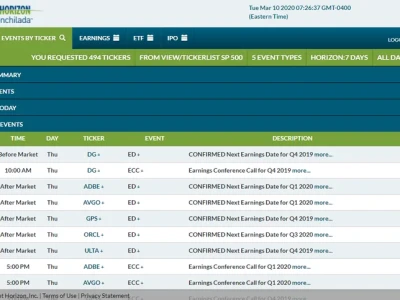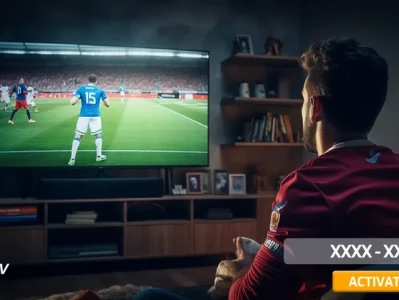I want you to imagine something with me for a moment. Picture a Sunday afternoon, maybe ten or fifteen years ago. The air is crisp, the smell of chili is starting to fill the house, and you’re desperate to see the final, nail-biting two minutes of a game happening 2,000 miles away. But you can't. Why? Because a television executive in a distant boardroom decided your region should watch a different, less interesting game. You were a captive. A hostage to the monolithic, one-size-fits-all programming block.
That world is dying. And I, for one, am here to celebrate its demise.
When I look at the list of NFL games available on a service like Fubo for a random Sunday—Jets at Bengals, Giants at Eagles, Cowboys at Broncos—I don’t just see a schedule. I see a declaration of independence. This isn't just about streaming; it's about a fundamental shift in the power dynamic between the creators of content and the consumers of it. It's the replacement of the gatekeeper with a gateway.
This is the kind of breakthrough that reminds me why I got into this field in the first place. We're witnessing the beautiful, chaotic, and utterly necessary dismantling of a media empire built on telling you what you want, rather than asking.
The End of the Prix-Fixe Universe
For decades, cable television has operated like a ridiculously overpriced restaurant with only a prix-fixe menu. You wanted the steak—in this case, NFL RedZone—but to get it, you were forced to buy the wilted salad, the bland soup, and the dessert you didn't even like. It was a bundle of channels, 90% of which you’d never watch, all designed to prop up a fragile and inefficient business model. It was insulting.
What we’re seeing now with platforms like Fubo is the dawn of the à la carte media universe. It’s like walking into a massive, vibrant food hall. Over here, a stall dedicated to the beautiful game—beIN Sports serving up European soccer. Over there, a booth for adrenaline junkies with auto and motorcycle racing. And right in the middle, the main attraction for millions every fall Sunday: a gleaming, all-you-can-eat NFL RedZone buffet. You pick what you’re passionate about, and you pay for that. This isn't just a better way to watch TV; it's a model built on respect for the audience.

This is a system that understands that a fan of the Tennessee Titans in Idaho is just as legitimate as a fan in Nashville. It uses technology not to create artificial walls, but to tear them down. Now, there are still some ghosts of the old system rattling around, of course. You’ll see things like “regional restrictions”—in simpler terms, it’s the digital ghost of the old broadcast map, a lingering remnant of media deals that haven’t quite caught up to the technology—but the trajectory is undeniable. We are moving toward total freedom of choice.
What does this mean for us, for the fans? It means the game you want to see, the team you’ve followed since childhood, is no longer held for ransom by a cable subscription. It means your screen, whether it’s a giant TV or a phone in your hand, becomes a portal to exactly the world you want to enter.
The Beautiful Friction of Progress
Now, is the transition perfect? Of course not. A quick glance at the common questions people ask about a service like Fubo tells a story of friction. "Why is it freezing?" "Is there a price guarantee?" "How do I get a refund?" These aren't signs of failure. They are the growing pains of a revolution. They are the sounds of an old engine sputtering out as a new, electric one hums to life.
Every great technological leap feels a bit messy in the middle. The first automobiles were unreliable and broke down constantly, making people wonder if their horse wasn't better. The early internet was a cacophony of dial-up tones and broken links. We are in that phase for streaming live events—the infrastructure is catching up to the dream, and the sheer speed of this change is just staggering, it means the gap between the old world of broadcast and the new world of on-demand is closing faster than we can even build the perfect bridges.
This is also the moment for some thoughtful consideration. As these new platforms become the primary way we access our shared cultural moments, they take on an immense responsibility. How do they ensure quality and reliability when millions are tuning in for a single, live moment? How do they balance a world of infinite choice with the need for shared experiences that bind us together? The challenge isn't just technical; it's cultural.
But these are good problems to have. They are the problems of abundance, not scarcity. The questions we should be asking now are bigger. What happens when this model extends to everything? Concerts, live theater, political debates, educational lectures? What new forms of art and community will emerge when they are no longer constrained by the physical and financial barriers of the old world?
The Future is Your Personal Feed
We're not just talking about a better way to watch football. We're talking about a paradigm shift in how we consume culture, how we connect with our passions, and how we define "live" events. The old model was a monologue, broadcast from a tower to the passive masses. The new model is a conversation—a dynamic, personalized, and empowering flow of information that puts you, the individual, squarely in the director's chair. This isn't the future of television. This is the future of experience itself. And it’s happening right now, one touchdown at a time.




